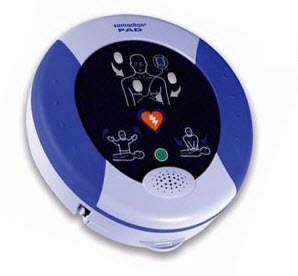Blog Roll: (Contributors)
» Hulet Smith, OT
» Megan Smith, PT
» Mike Price, OT
Topics:
Adaptive Devices
Adult Tricycles
Air Purifier
Allergy
Alternative Communication Devices
Alzheimer's Dementia Products
Aquatic Products
Arthritis Relief Products
Autism
Back Relief
Ball Pit/Pool
Bariatric
Bath Benches
Bathtub Lift
Bed Rails
Bedsores / Decubitus
Bidet
Body Solid Exercise Products
Breast Feeding Products
Bushel Trucks
Cancer
Catheters
CEU
Changing Bench
Child Car Seats
Child Care Products
Christmas Gifts
Clinic/Medical Equipment
Clinical Furniture
Cold and Flu
Communication Devices
Compression Garments
Computer Products
CPAP
Crutches
Daily Assistance Products
Daylight Lamps
Dental Care
Diabetes
Doctor's Office
Dysphagia
Electrodes
Electrolarynx
Emergency Preparedness
Ergonomic Equipment
Exam Tables
Exercise Products
Eyecare
Family Tricycles
First Aid Kits
Floor Scales
Fluidotherapy
Foot Drop
Foul Weather Gear
Furniture
Gait Trainers
General Articles
General Posts
Glassless Mirrors
Hand Sanitizer
Head Protection Helmets
Hearing Impaired
Heart Health
Heating Pad
Hip Fractures
Home Assistance Products
Home/Office Assistance
Hospital Beds
Hoyer Lifts
Hyperbaric chamber
Hyperthermia/Hypothermia
Ice/Hydration Carts
Impotence Products
Incontinence Products
Infection Control Gowns
Inspirational Stories
Lift Chairs
Light Therapy
Low Vision Products
Massage Tables & Chairs
Massage Units
Maternity
Medical Facility Products
Medical Scales
Multi-Sensory Environment
Natural Healing
Nebulizers
Non-Hospital Bedding
Nutritional Supplements
Office Furniture
One-Handed Products
Operating Room Devices
Ostomy Products
Oxygen Compressors
Oxygen Concentrator
Oxygen/Nebulizer Masks
Pain Relief
Paraffin Unit
Patient Lift
Patient Lifts
Patient Restraints
Patient Transfer Systems
Pediatric Bath Chairs
Pediatric Furniture
Pediatric Learning
Pediatric Recreation
Personal Listening Devices
Personal Warming Products
Physical Therapy
Pill Organizers
Pillows
Playground Equipment
Pool Lifts
Press Releases
Procedure Chairs
Pulse Oximeter
Reading Assistance
Reference Materials
Rehab Equipment
Rehabmart News
Rehabmart Newsletter
Respiratory Health
Rollators
Saunas
Scooters
Seniors
Shower Chairs
Shower Commode Chairs
Shower Gurney
Showers Chairs
Side Access Bathtubs
Skin Tear
Special Needs Dinnerware
Special Needs Seating
Special Report Articles
Splints
Sport Injuries
Standers
Staying Home
Stethoscopes
Stimulus Reward Toys
Stress Relief
Stroke
Strollers
Summertime Products and Summertime Fun
Talking Products
Therapy Balls
TheraTogs
Thermometers
Traction Devices & Tables
Treatment Tables
Ultrasound
Vibroacoustic Therapy
Vision Products
Walk-In Bathtub
Walking Aids
Walking Boot
Weighted Wearables
Wheelchair Accessories
Wheelchair Cushions
Wheelchair Lifts
Wheelchair Ramps
Wheelchair Transfer Systems
Wheelchairs
Women's Health
Work Hardening Products
Wound Care
Start a Heart and Help Save a Life with a Samaritan PAD Defibrillator

While traditional models are transported on carts in hospitals or carried by paramedics, the new generation of defibrillators weigh only two pounds, making them light enough to be wall mounted next to a fire alarm or extinguisher in a public setting or carried from room to room in a home environment. That is where portable external defibrillators such as the Samaritan PAD Defibrillator come into play.
Assisting someone in cardiac arrest is quite stressful, but with voice and visual prompts, the Samaritan PAD Defibrillator gives step-by-step instructions for fast and accurate use by anyone whether he or she has medical training or is an inexperienced bystander. An icon shows where to place the pads on the patient's chest, and then the unit analyzes the patient's cardiac rhythms. If it determines that defibrillation is needed, it verbally and visually prompts the user to press the button and stand clear. The unit sends a SCOPE biphasic wave to the heart, regulating or restarting it as necessary, and optimizing it for the patient's unique needs. If the patient doesn't need a shock, the PAD will not deliver one, preventing accidents. A third icon indicates when it's safe to touch the patient again, allowing helpers to resume CPR if necessary, or medical personnel to begin treatment safely.
The PAD has an internal memory capacity of 45 minutes and a USB port for allowing incident data to be reviewed by medical personnel once at the emergency room. Recorded information is downloaded via a custom USB cable and reviewed with SAVER software. Other indicators include a low battery prompt, a ready-to-use light, and a flashing service icon. Should the battery run out completely or the unit need servicing based on an automatic self-test, the service icon stops flashing.
Lithium batteries power the PAD, offering enough power to deliver over thirty shocks or six hours of continuous monitoring. The batteries and electrodes come in a combination pack with a three-year expiration date, reducing maintenance time. Each PAD comes with a battery pack and a carrying case. In addition to the Samaritan PAD unit, Rehabmart also carries replacement battery packs and a wall cabinet suitable for installation in public settings.
The Samaritan PAD meets current guidelines issued by the American Heart Association for both
CPR and ECG standards. In addition to public areas such as transportation stations, office buildings, and entertainment complexes, the Samaritan PAD may be carried on commercial or private aircraft as well as trains, assuring the timely arrival of help in the event of a cardiac crisis.
Fran Jablway,
Medical Consumer Writer
and
Hulet Smith, OT
Rehabmart Team Leader & CEO
